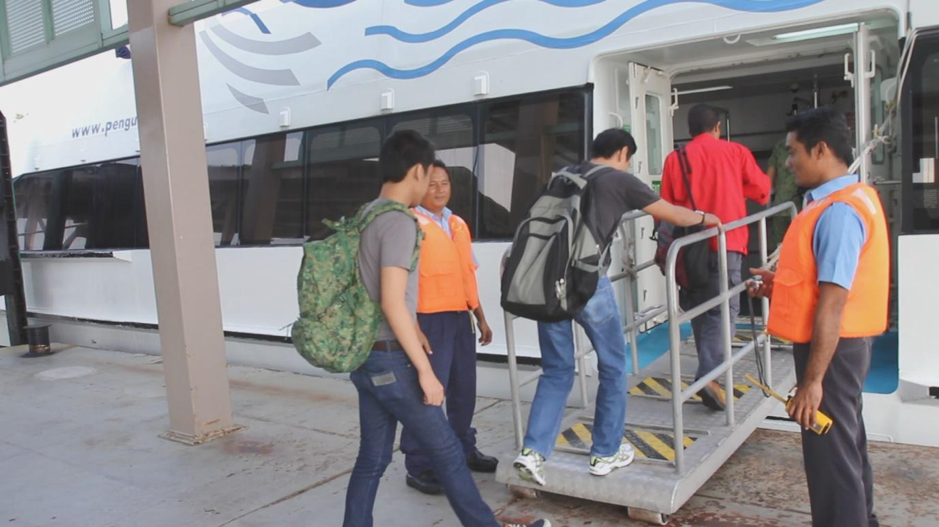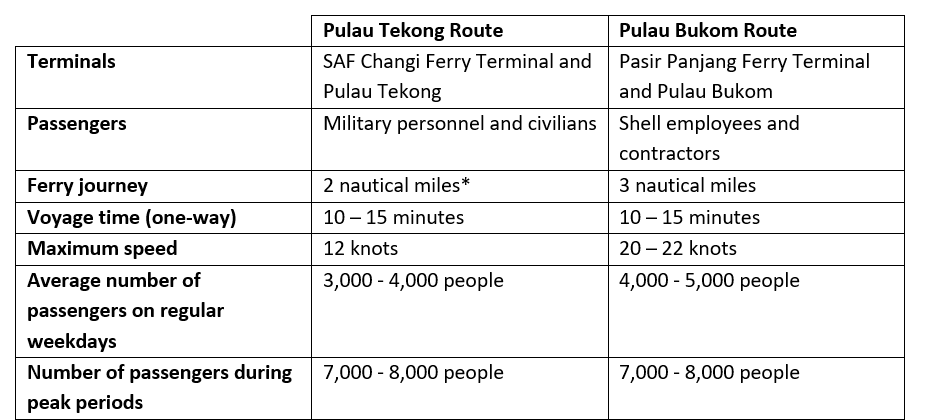
For many military personnel, Penguin served as their main transport between SAF Changi Ferry Terminal and Pulau Tekong
Mention Penguin and most older Singaporeans will probably associate it with homegrown Penguin International Limited, the one-time regional ferry provider operating between Singapore and the Riau Islands.
However, Penguin today no longer operates ferries to Batam and is a much bigger group than what most imagine. Today's Penguin is a publicly listed integrated designer-builder-owner-operator of high-speed commercial ships. Its recent projects include two firefighting search-and-rescue vessels for the Singapore Civil Defence Force, patrol boats for the Australian government, armoured security boats for Nigeria, windfarm support vessels for Taiwan and passenger ferries for South Africa. Penguin also operates a fleet of offshore crewboats and passenger ferries in Malaysia and Singapore respectively.
If you are fortunate enough to have served the Singapore army previously, then the Penguin name would most certainly ring a bell with you. Have you guessed it?
Yes! They are the ferry operator that used to transport our boys in green between Pulau Tekong and the SAF Changi Ferry Terminal!
Most males in Singapore would have boarded Penguin's ferries weekly during their Basic Military Training days for National Service to get to Pulau Tekong. For close to two decades, Penguin served the Singapore Armed Forces through the provision of ferry services between Pulau Tekong and the Singapore mainland across a two-nautical mile shipping channel.
Aside from Pulau Tekong, Penguin also operates daily passenger ferry services from Pasir Panjang Ferry Terminal (for Shell Eastern Petroleum Pte Ltd since 2016) to Pulau Bukom. This service brings Shell employees and contractors over to Shell's biggest refinery in the world - approximately 5,000 ferry passengers on weekdays.
Penguin conducts a series of stringent safety checks to ensure a smooth and safe journey for its passengers and running of daily operations. We speak to Kasandra See, HSE Manager of Penguin to find out more.
Different safety environments: Pulau Tekong and Pulau Bukom

* 1 nautical mile = 1,852 m or 1.852 km
Comparing the two routes, Pulau Tekong is more sheltered and the sea condition there is relatively calmer due to less marine traffic and smaller vessels along the route.
"However, in recent years, the extensive reclamation works in and around Pulau Tekong is becoming an additional hazard to navigation, by way of an increased number of tugs, barges and dredgers in the area, as well as a narrower channel arising from the land reclamation," highlighted Kasandra.
On the other hand, the Pulau Bukom route is busier and used by larger ships moving along the fairway.
"The ships create big wakes in their path. This results in constantly choppy sea conditions, which is a hazard to embarkation and disembarkation at the ferry terminal, as well as passenger discomfort during the voyage," said Kasandra. In addition, there is considerable cross-traffic coming from other passenger ferries running between Harbourfront Centre and the Indonesian Riau Islands.
Cultivating a safety culture
"Our Master and his lookouts need to be very attentive when the ferry is crossing the fairway. Pelican Ship Management employs a combination of incentives and disincentives to keep our crew properly motivated, bearing in mind that we also need to pay attention to their mental and physical wellbeing."
As part of the Penguin group, Pelican Ship Management operates in a no-blame culture.
"We have in place a rewards and penalty system to ensure that our in-house and client's rules and procedures are properly adhered to. The biggest threat to maritime safety from our past experience is complacency. That is the enemy that we are fighting," explained Kasandra.
Pelican Ship Management organises regular safety campaigns to enhance crew safety awareness and reward positive behaviour. "We also conduct regular sessions on a myriad of health and wellness topics to promote healthy lifestyle among our seafarers,"
"We engage our crew regularly to gently remind them of their safety obligations and let them know that we are there for them, especially if they have any safety concerns or personal issues with regard to their mental and physical wellbeing."
Safety from top-down
"Over the years, our industry - ourselves included - has moved away from a crew-centred, punitive approach towards safety management towards a holistic top-down balanced approach," highlighted Kasandra.
At Penguin, safety is led by example from the top management through an intense safety engagement that is not commonly practised in the local industry.
Penguin's Managing Director takes a personal interest and responsibility in the group's safety management, dedicating time during the weekly management meeting to run through safety issues across the group. This safety commitment is also exemplified by the shipyard safety walkabout that the Managing Director personally participates in every month, followed by a safety performance report presentation to the board of directors every quarter.
Best practices at Penguin
Kasandra shared that it is the responsibility of the crew and ship management team to ensure that periodic checks and planned maintenance programmes are carried out.
"Penguin group benefits by having its own shipyard in Tuas, which can undertake corrective repairs and dockings if required. In addition, Pelican Ship Management has a roving team of electrical and mechanical personnel who can respond quickly to vessel breakdowns 24/7."
In addition, to combat the hazards posed by the constantly choppy waters in the jetty area, the crew conducts daily checks on mooring ropes to ensure that worn-out ropes are immediately replaced. "Our ferries also adopt double mooring at forward and aft when alongside the jetties," Kasandra added. "We take safety seriously."

